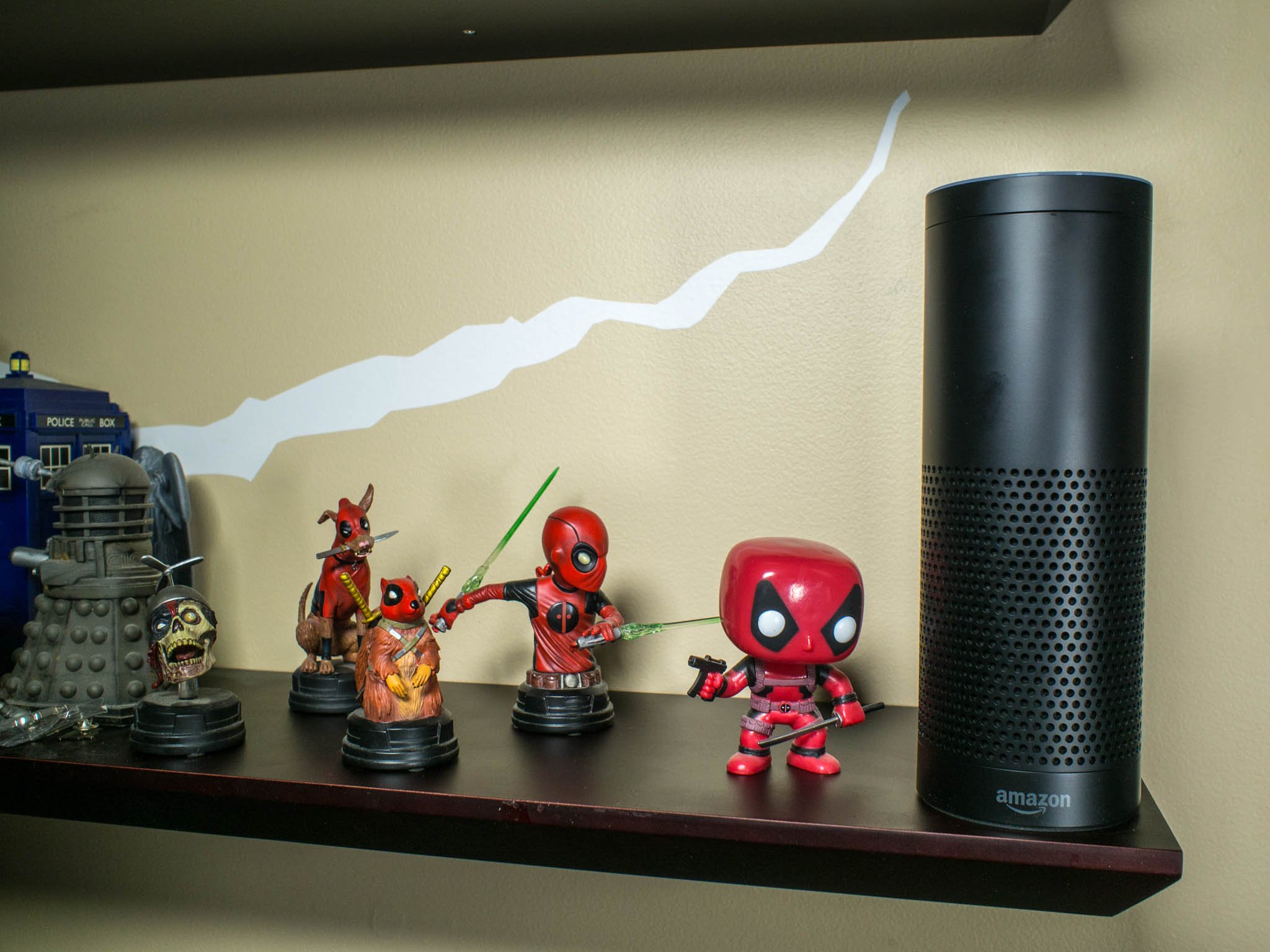We're dominated by personal electronics today. Your phone has your account on it and through this you access your files. Everything works, right until you want to share with someone else. Things get a little complicated, even with simple things like grocery lists, and with more complex things like music you need to follow some very specific steps and deal directly with the same app the sharer is using. It's not impossible, but it's also not always particularly easy because these services are designed to be mostly single-user.
Amazon Echo introduced a new way to look at a lot of the day to day services you use in the home. It's a stationary digital assistant designed to listen when called, and it's something everyone in your house has access to. It's a family device if you want it to be, and over the last year it has grown to be a powerful household accessory without equal.
Here's our review. Again. Our re-review. You'll see what we mean.
About this review
While the Amazon Echo was first announced last November, we didn't give it a proper review until February due to Amazon's painful invite and order system when it was first released.
Since that review, Amazon has worked with developers and third party companies to add dozens of new features to Echo. At the same time, Amazon has been improving the Echo app and voice recognition on the Echo hardware. With all of the little changes, the Amazon Echo of November 2015 is almost a different product from the Amazon Echo of February 2015. With that in mind, we're re-reviewing this product as though it were version 2.0.
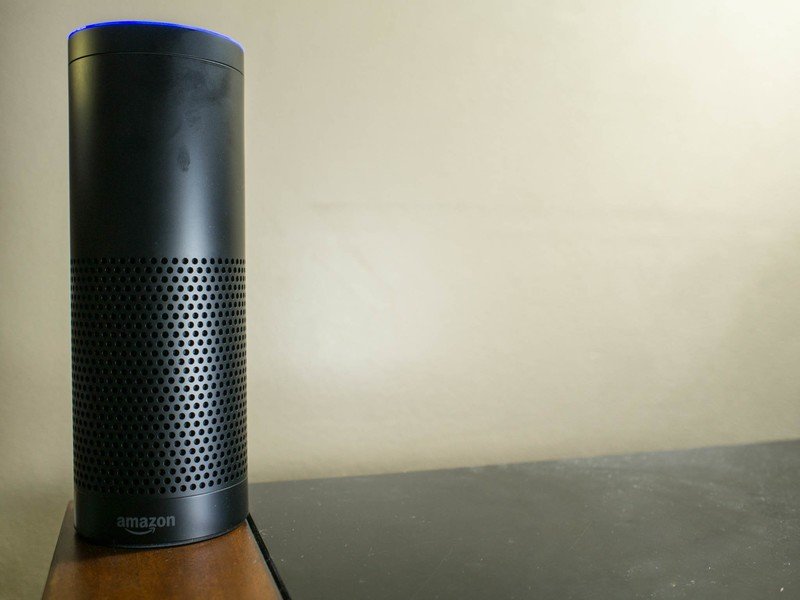
All about that audio
Amazon Echo Hardware
There's honestly not much to say about the physical form that makes up Amazon Echo. Imagine a flat black cylinder not much bigger than your average sport water bottle. The 9.25-inch cylinder weighs in at just over two pounds, and feels nice and solid. The weight is distributed well enough that you can bump it accidentally and not worry most of the time about knocking it over. On the base of Echo is a rubbery material soft enough that you don't have to worry about scuffing or scratching whatever surface you set it on, with a notch for the power cable to come out of the back of the cylinder. The Amazon logo on the front also helps you figure out which way to point it.
Get the latest news from Android Central, your trusted companion in the world of Android
Wrapped around the bottom half of this cylinder is a speaker grille, and at the top there's a pair of buttons and a small strip around the top that glows in two shades of blue or a deep red depending on what is happening when you're interacting with it. Those two buttons allow you to either manually activate the Alexa voice service or disable the microphones that power the listening system.
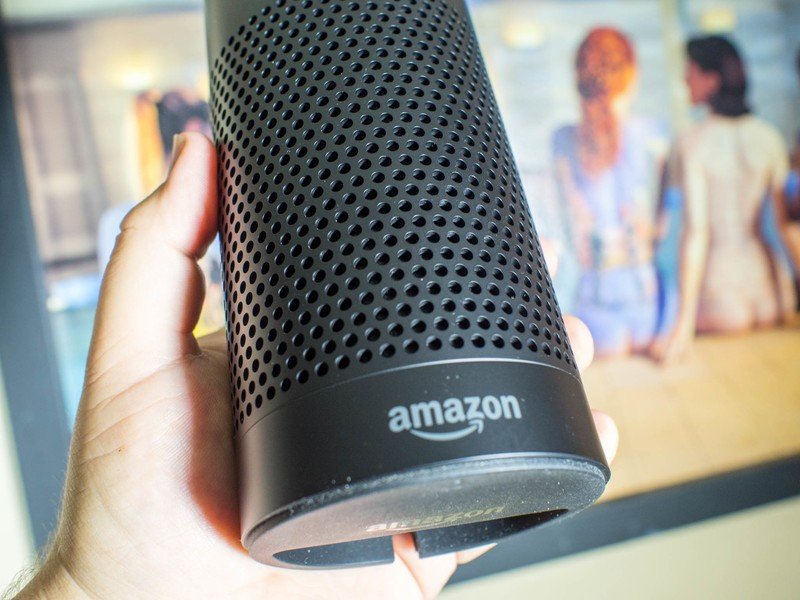
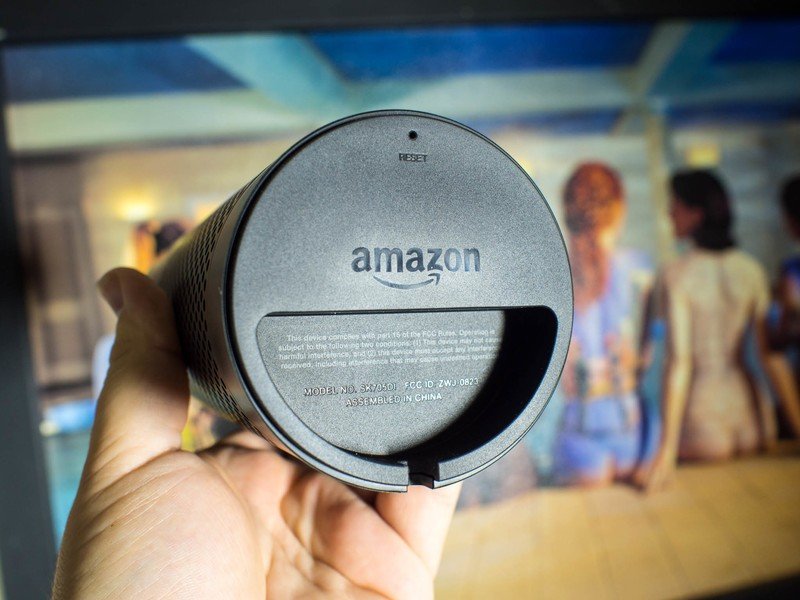
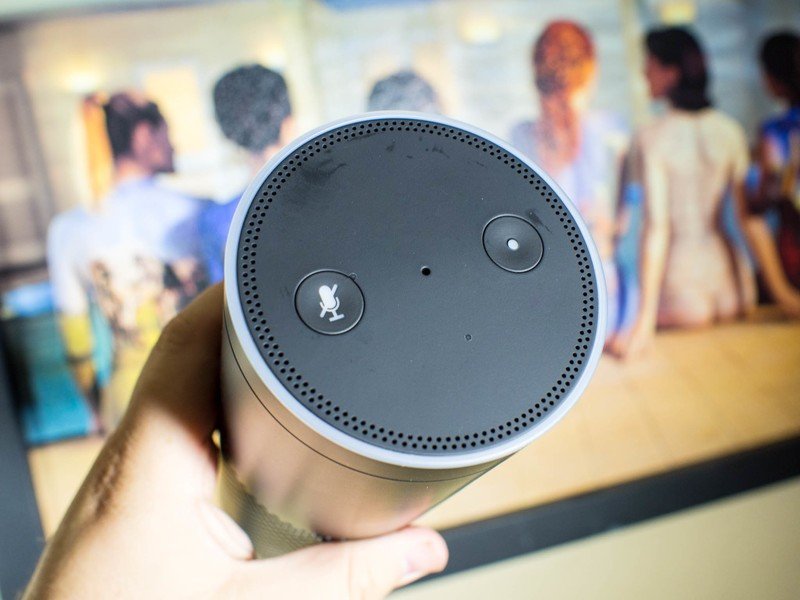
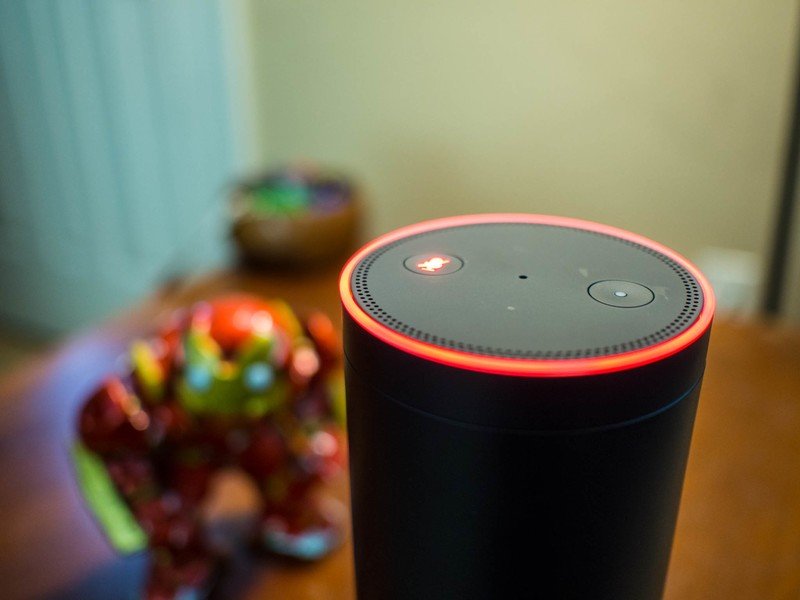
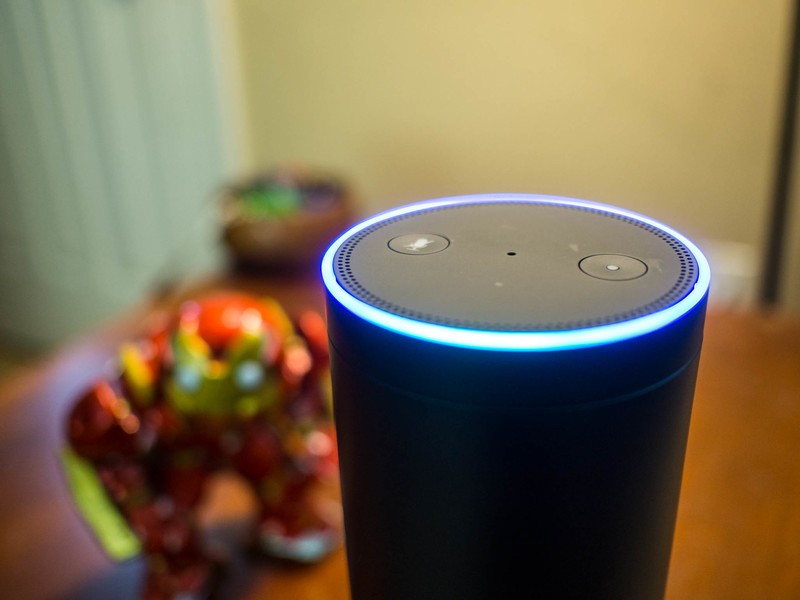
The entire top inch of Echo rotates, and when you twist the head of this speaker one way or the other you are adjusting the volume on Echo. It's a satisfyingly smooth rotation, one that furthers the feel that this is a quality piece of hardware. The light ring around the top lights up to match your volume controls, and that same light ring appears if you set volume by voice. It's ten light sections around the top, increasing or decreasing as you go.
It's a solid hardware design all the way around.
The two things that make Amazon Echo worth using are the microphones and the speaker. The speaker is a 2-inch tweeter with a 2.5-inch woofer to deliver more than enough sound to fill a room, at a quality that handily bypasses your average Bluetooth speaker but at the same time isn't quite as capable as a similarly-priced Sonos speaker. The microphone array, on the other hand, is without equal on anything with the words "connected" or "smart" in front of the name. Amazon has a seven microphone array at the top of Echo, and it is capable of picking out a human voice at its normal tone and volume from up to 10 feet away with music playing. The microphones also don't need to be trained to a specific voice — anyone can accomplish this just by speaking. When it comes to listening to the user, Amazon Echo is without equal.
All of this comes together to create a decent WiFi connected speaker with an incredible microphone array, something no other company is offering right now. Echo is designed to sit somewhere and be accessed by multiple people over the course of a day, and while placement is key, Echo's ability to react to a raised voice from the next room offers some flexibility for where it lives in the home. It's a solid hardware design all the way around.
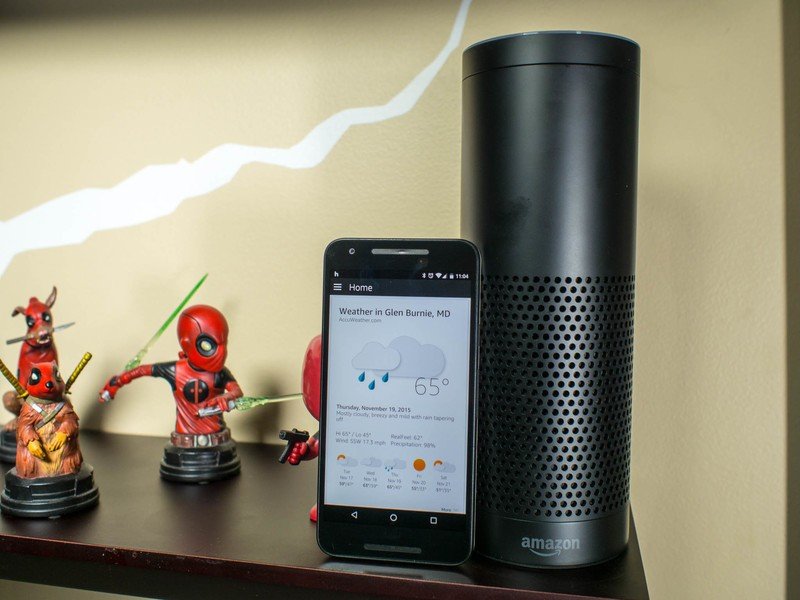
Remarkably capable, if a little clumsy
Amazon Echo Software
The core of what makes Amazon Echo useful is the ability to speak aloud and have the always listening speaker react to your commands. The list of things Amazon's Alexa service can do grows weekly, and currently includes randomly generated numbers (dice rolls), alarms and timers, checking for weather and sports, grabbing the news headlines of the day, and answering general questions with searches on Bing and Wikipedia. If entertainment is more what you're looking for, Echo can stream music from Amazon or read books from Audible. Recently, Amazon Echo has also added the ability to execute custom commands through IFTTT and communicate with smart home accessories like Philips Hue Bulbs and Samsung's SmartThings hardware. The list of things you can do is truly massive, but all of the commands follow the same basic setup.
"Alexa, [do this thing]."
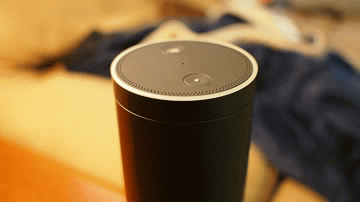
In this, Alexa on the Amazon Echo does an fantastic job. You want to add eggs to your grocery list? Done. You want to see how late the Best Buy down the street is open? Easy. Your kid wants to know who Guy Fieri is after an inappropriate joke you just made? No sweat. You want to follow up any of these commands with something related to your previous query? Pump your brakes, that's not gonna fly.
Alexa's limitations aren't hard to find, and when you do find them it's a little disillusioning. For starters, most of the commands baked into Alexa have to be spoken word for word like you see it in the demo. If you misspeak, Alexa has no idea what to do with you and you have to ask again. The software also doesn't know how to handle follow-up questions, and when you ask a question and Alexa needs additional input from you there's a noticeable delay between when Alexa has finished talking and when Echo is listening for your response, which is just plain odd given how well it handles the initial request nearly every time. Neither of these things were big deals a year ago, but since then we've seen dramatic improvements in voice communication and interaction with competing voice services. Compared to Google Now on any modern Android phone, Alexa's ability to navigate human language and interact beyond the initial command is noticeably lacking.
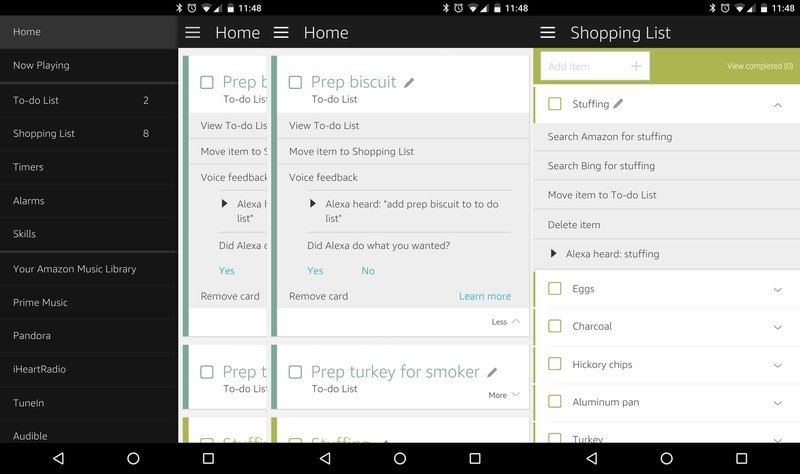
The biggest example of this is the add-on features Amazon calls Skills. These are third-party services Amazon lets users add on at their leisure, and they range from silly to immeasurably useful depending on who you are. The ability to confirm schedules for trains, for example, is a whole lot more useful than asking a Shakesperian-era Bard to offer you a long-winded insult, though that is significantly better to use for parties. You say "Alexa, ask Angry Bard for a burn" and Alexa will respond with something amusing. If you deviate from this, maybe by saying "some burns" instead of "a burn" you'll find Alexa has no idea what you're talking about, even though clearly Angry Bard and burn are the important parts of that command. Flexibility goes a long way, and Alexa is in desperate need of some.
It's clear based on the contents of the connected home section of this menu that it should have been promoted to the main page a long time ago.
This being an Amazon product, Echo's services are almost entirely Amazon-centric. You can't use anything other than Audible for books, and music is currently limited to Amazon Prime Music, Pandora, iHeartRadio, and TuneIn. You can Bluetooth pair to gain access to other services, but you lose voice commands for search and playback outside of pause and play when you do that.. The same goes for search engines, you get what Amazon gives you — which is usually Bing. While it isn't surprising that Amazon isn't using Google for any of this, save for the ability to add Google Calendar so Alexa can tell you about your next event, it's a little disappointing that the company seems to be actively avoiding Google months later.
Everything about the Echo, including settings and login information, is handled through the Amazon Echo app. The layout for this app is nice and simple. On the main homescreen you get a running stream of your interactions with Alexa. When you've added things to lists or asked for music or books to be played, you'll see that here. If you want to use the Echo app to control playback, you have that ability here. The most important thing about this activity stream is the ability to see exactly what Alexa heard when you spoke. If Amazon isn't 100 percent about an interaction, even if it was successful, you'll be asked to offer feedback on the voice translation and help improve the service. You can peek in on any command to see what was "heard" which is great. It helps the user understand where things went wrong and makes the information nice and easy to get to.
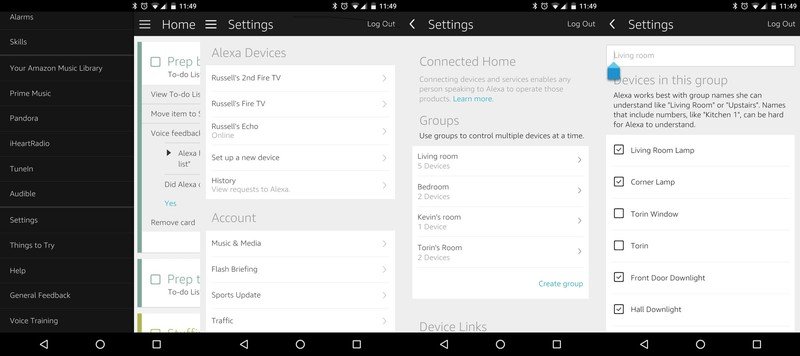
If you want to adjust individual parts of the Echo experience, the left menu is where that happens. If you want to adjust your streaming audio setup or peek into your full grocery or To-do list, these options are readily available to you. If you want to configure your connected home accessories, say by organizing Hue bulbs by room and giving them group names to make them easier to adjust through Alexa, you'll find connected home setting buried in three levels of settings. Just above those settings you'll find everything you need to control Flash Briefings for the news reports and traffic information based on your drive to work every day. It's clear based on the contents of the connected home section of this menu that it should have been promoted to the main page a long time ago, but at the same time it's something you'll probably only use when adding a device to your list after the initial setup.
For the most part, the Echo app is meant for maintenance. It's not something you're likely to need to poke around in every day. Jump into voice training to make extra sure Alexa can understand you, manually jump to the next song in a playlist if you're too far from Echo, and if you're really into Amazon's products you can mess with Alexa settings on the Fire TV. There are a lot of things that could be done better here to improve usability, but it's still highly functional. In a way, that's something you can day about Amazon Echo and Alexa in general.
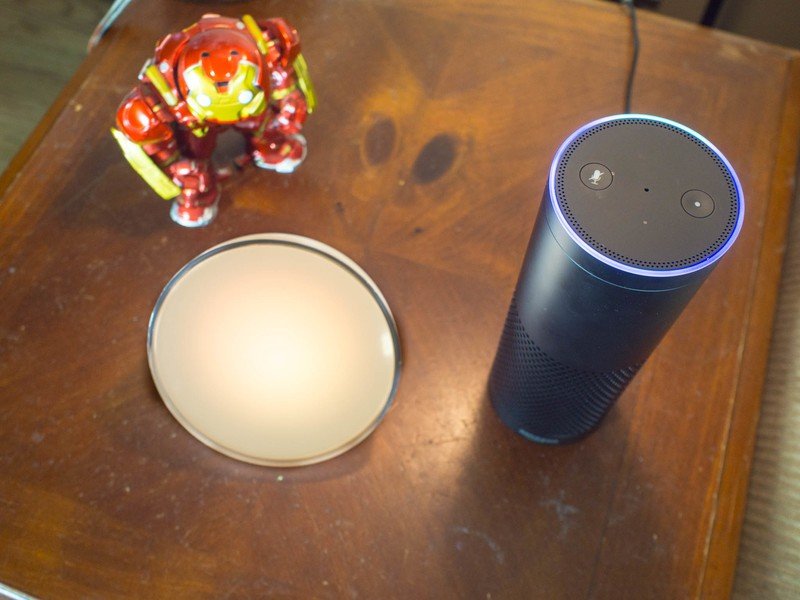
Making everything easier
Amazon Echo Experience
Even at its highest volume setting, the alarm on Amazon Echo is a soft tone that fills a room gently instead of irritating you out of bed. This doesn't do much for you if you need that car horn shoved into a beer can sound to get you out of bed, but for every other alarm or timer situation it works well. The spoken responses Alexa offers come in at whatever the volume letter is currently set at, so if someone is having trouble using Alexa as an alarm clock you could always ask Echo to play something from The Beatles, where you'll get "I COULDN'T FIND SONGS FROM THE BEATLES IN YOUR MUSIC LIBRARY" loud enough to wake the dead. The moral of this story is Amazon Echo could really do with some preset volume levels based on time of day or ambient volume for things like alarms and spoken replies.
Amazon's music playback service is very direct on Echo. If there's a source to stream from with the name you requested, you'll get what you want. If not, you'll get the above error and a suggestion to try a radio station if you can't find what you're looking for. It feels like Amazon could just offer to start playing a radio station based on your prior request here, but that's another matter. The radio stations curated by Amazon aren't bad if you're looking by genre, but by artist things get a little messy. There aren't a lot of repeats, which is great, but more than a couple of times it's clear there was some reaching well beyond what most folks would consider similar to fill a station list.
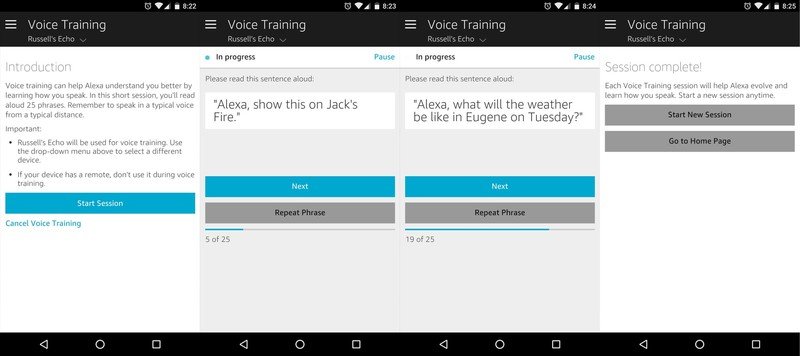
Controlling connected home stuff like the Philips Hue bulbs with Echo is fantastic, as long as you remember the names of your bulb groups. Echo grabs names really well, even unusual names, and the failure rate is noticeably lower than anything else. Currently the Echo app only really works for grouping, dimming, and on/off commands, but there are alternatives out there for color commands. The same can be said for the SmartThings connectors, voice commands work great and everything works as advertised. For people actively trying to build a smart home, Echo is a perfect addition to your setup. It's not quite good enough to justify buying multiple Echo units, which you'd need to make sure you could be heard from anywhere in the house, but that's where Amazon's Alexa extensions on things like the Fire TV come in.
If you have kids, Amazon Echo is simultaneously the best and worst new gadget you can bring into your home. It's responsive and simple enough that all three of my kids picked up the commands immediately, and outside of some minor squabbling about what songs to play it's been a delight. Letting the kids ask Alexa questions that relate to their homework has turned out well so far, especially when the link for more information can be delivered to the Alexa app so I can pick up where Alexa left off. Of course, being children, I do also occasionally find multiple listings for butts in the grocery list and reminders to let the kids stay up late in the To-do list, but ultimately being able to share Amazon Echo with the whole family has been a good thing.
It really wouldn't be hard to imagine Amazon as the best in-home entertainment controller with a little more development and partnership.
IFTTT and Echo are amazing together. You can set custom commands based on IFTTT recipes, which as anyone who has used the service knows the limits are basically your imagination. Being able to ask Alexa to "trigger the doomsday device" when my son is taking longer than usual to get out of bed and have all the lights in his room burn bright red thanks to a Hue connection. Extending the Echo service by setting my phone to play a song when the alarm goes off means I can set a timer for something in the kitchen and wander outside to do something without worrying about missing the timer. While I could have set that alarm on my phone to begin with, Alexa in the other room is routinely more accurate than Google Now in my pocket, so I use what works best at the time.
While the services surrounding Echo have grown significantly over the last year, it's hard to use this platform and not want even more. The accuracy with which Echo reacts to music requests means it should be able to grab video files as well, and even if interoperability with the Chromecast is a pipe dream the ability to start a video on a Fire TV through the Echo would be amazing. Following that up with an IFTTT trigger that dims the living room lights when a video command is sent to your Fire TV would be amazing, and that's just the start. Echo is already doing a lot of things in the home that competing software hasn't even started touching yet. It really wouldn't be hard to imagine Amazon as the best in-home entertainment controller with a little more development and partnership.
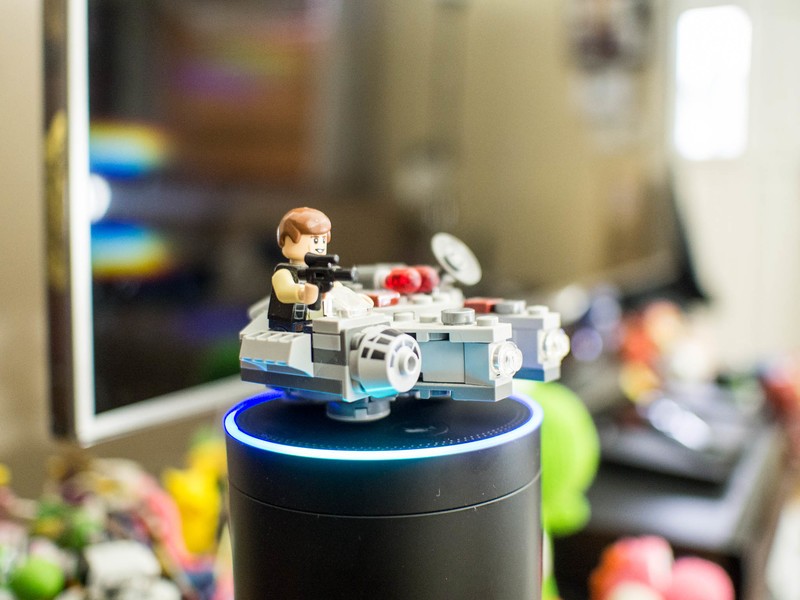
Striking the balance
Amazon Echo Bottom line
Right now this connected speaker, voice assistant, smart home cylinder is great if you fall into one of two categories. If you're a connected home fan, this is undoubtedly something you should add to your home. If you're into trying new things and you aren't deeply embedded in Google's entertainment ecosystem, this is also something for you. For everyone else, things aren't quite so clear.
Echo isn't as capable as other connected speakers at this $180-$220 price range. If you want something that is smarter than the average speaker, the Sonos Play:1 is still the best thing you can get. If you want something that connects to your Google software, Echo isn't going to do what you want and in many ways doesn't have what you want for basic searches. If you train yourself to navigate the overlap, using Google Now for things outside the house and Echo for things inside the house, it's not so bad. You basically are remembering two sets of commands at that point, and that's not quite what you want. In a perfect world Amazon and Google would play nicer together, but that's not going to happen anytime soon.
Amazon has built an impressive system here, and the desire to continue building on that system with new things all the time is fantastic. If Amazon figures out how to fill the gaps by offering better natural language or conversational interactions and support for more third-party services before a competing product is released, the Amazon Echo is going to be the best game in town for a long time. As it stands right now, it's still very much a connected speaker for geeks. That's great for people who love to tinker, and the potential to be so much more than what it is right now without a major hardware revision is incredible. There's a bright future for this idea if someone can finish the thought, and if Amazon gets there in time it'll be amazing.
Should you buy it? Probably
Chances are, if you're reading this, you're down with a little tinkering and playing with new things. As long as you aren't 100 percent into Google services all the time, there's a lot to love about the Echo.
If you've got the $180 and you're looking to do something new, Amazon Echo is a great way to explore. If you're concerned about the cost or you've got everything on Google's servers, there's a good chance this isn't for you.

